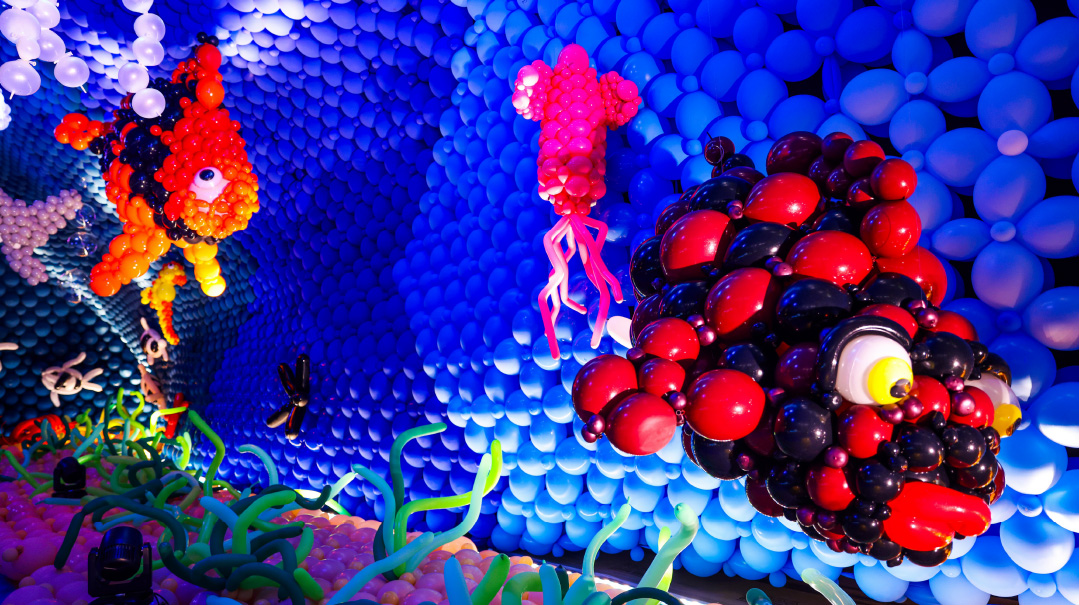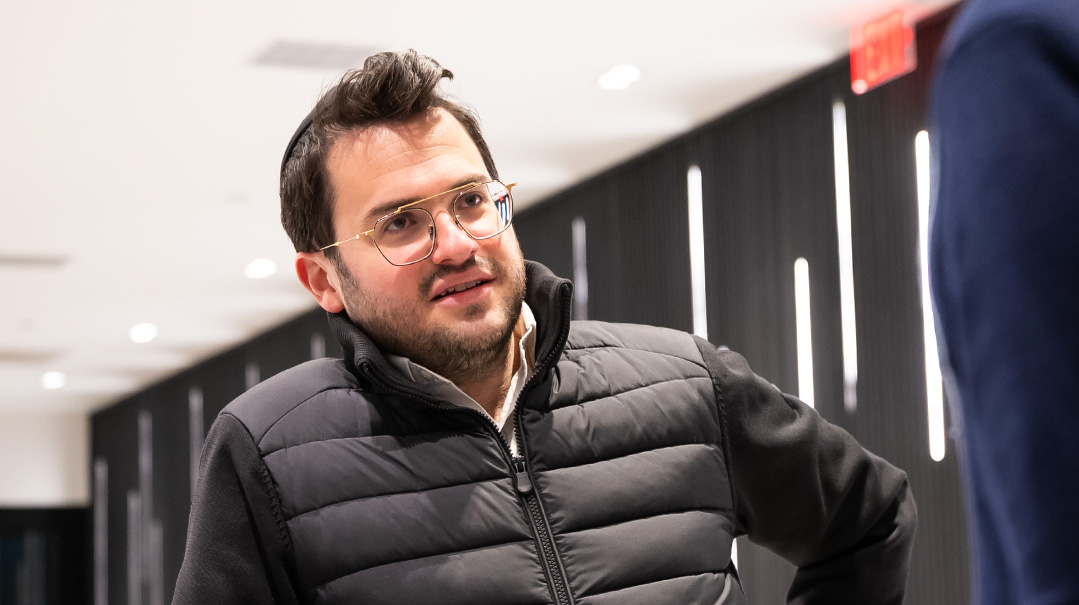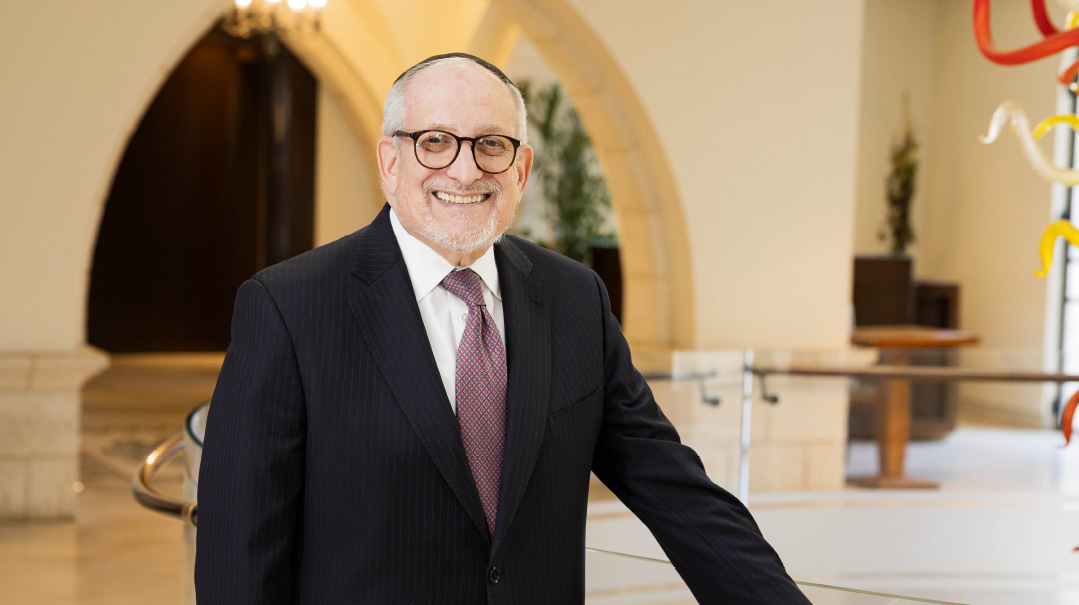Art That Pops

For two Israelis, balloon sculpture goes far beyond dogs and swords

Photos: Itzik Roytman
We met balloon polar bears and a balloon Eskimo, and that was after passing through an “underwater” balloon tunnel facing a 70-foot-tall balloon octopus with moving parts. For Kobi and Yonatan, founders of the Balloon Story exhibit that has just ended in New York, the “popping party” of hundreds of thousands of balloons was a fitting end to family fun that goes way beyond those elongated twisted shapes of dogs and swords
Park Avenue, on the East Side of Manhattan, is sun-washed and noisy on an August afternoon. But as we enter the Park Avenue Armory building, a venue for exhibitions and events, we suddenly find ourselves in a darkened hallway that opens up into a room filled with 140 oversized, eye-popping, brightly colored sculptures made completely of… balloons! We felt like we’d left Kansas to find ourselves over the rainbow in Oz.
Balloon Story, this enchanting exhibition — which, sadly, wrapped up before we went to press — is the brainchild of Israeli entrepreneur Yonatan Eizik and balloon artist Kobi Kalimian. Originally launched in Tel Aviv a year ago, they decided to bring it to New York as a way of sharing the magic, as well as providing employment for several dozen Israelis during the wartime downturn. Balloon Story combines an incredible feat of balloon art with a generous effort to generate parnassah for Israeli families.
Not Just Dogs and Swords
We’re greeted at the Armory by Kobi Kalimian, the artistic director of the show, and Yonatan Eizik, the producer. They seem visibly more at ease when they discover their American press contingent is comprised of a reporter wearing a mitpachat and an Israeli photographer.
The exhibit is filled with families of all types, and we have to speak loudly to hear each other over the delighted screams of young children in this cavernous, 55,000-square-foot space. But Kobi and Yonatan’s enthusiasm for this 700,000-balloon wonderland project is contagious. Kobi is a good sport about allowing himself to be photographed sitting in an armchair with a bucket of balloons pouring onto his head.
As the master conjuror behind these enchanting illusions, Kobi serves as our guide through the exhibit, which is kept at a cool 69 degrees to prevent the balloons from deflating. A resident of Kedumim, in the Shomron, this father of five was selling cell phones when he first became captivated by balloons at an exhibit in Jerusalem.
“When you mention balloon art, people think of the guys at parties shaping dogs and swords,” he says. “It’s so much more than that.”
Most people start small when they pick up a hobby. But Kobi, who had no prior artistic training, says he likes a challenge.
“I’m crazy — from the start, I made big projects,” he says.
Oops! We could not locate your form.







